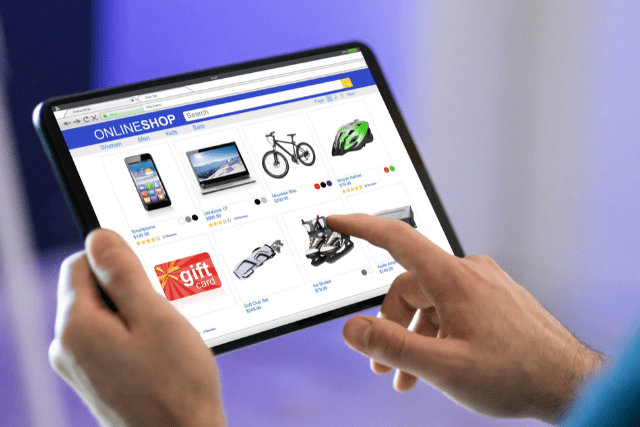If you’re running an online store, you know it’s not just about having great products or competitive prices. To really stand out, you need to create an emotionally engaging shopping experience that makes customers feel connected to your brand. Why? Because when customers feel something, they’re more likely to make a purchase and, even better, come back for more.
Emotional engagement is a game-changer. It builds trust, fosters loyalty, and ultimately drives conversions. In this article, I’ll break down proven strategies to help you make your online store a place where customers don’t just shop—they feel connected, engaged, and valued.
Why Emotional Engagement is Crucial for E-Commerce Success
Let’s be clear: emotional engagement isn’t just fluff. It’s a proven strategy that drives sales. When customers feel an emotional connection to your brand, they’re more likely to buy, stay loyal, and recommend you to others. Think about it—when was the last time you made a purchase based purely on logic? Probably not often. Most of the time, it’s emotions that drive decisions. That’s why brands like Apple and Nike have such devoted followings—they connect on an emotional level.
Key Takeaways:
- Storytelling: Create narratives that connect your products to your customers’ lives and aspirations.
- Personalization: Use data to offer personalized recommendations that make customers feel recognized and valued.
- High-Quality Visuals: Use immersive visuals to make your products more relatable and engaging.
- Building Relationships: Focus on building long-term relationships with personalized communication, loyalty programs, and great customer service.
- Social Proof: Use customer reviews and testimonials to build trust and community.
1. Use Storytelling to Create a Connection
Storytelling is one of the most effective ways to create an emotional connection with your customers. People love stories—they’re memorable, engaging, and relatable. When you tell a story about your brand or products, you’re not just selling; you’re building a narrative that customers want to be a part of.
How to Do It:
- Product Descriptions: Don’t just list features—tell a story about how the product was made or how it solves a problem.
- Customer Stories: Share testimonials and experiences from real customers. This not only builds trust but also helps potential customers see themselves in those stories.
- Behind-the-Scenes Content: Show the process of how your products are made, the team behind the brand, or the inspiration for your latest collection.
Platforms like Shopify and Etsy offer great tools for incorporating storytelling into your product pages and marketing efforts.
2. Personalize the Shopping Experience
Customers don’t want to feel like just another number. They want a shopping experience that’s tailored to them. Personalization is all about using data to understand your customers’ preferences and behaviors, so you can offer them exactly what they’re looking for.
How to Do It:
- Product Recommendations: Use browsing and purchase history to suggest products your customers are likely to love.
- Email Marketing: Send personalized emails with product recommendations, exclusive offers, or content tailored to the customer’s interests. Tools like Mailchimp can help you set up these campaigns easily.
- Dynamic Website Content: Change up your homepage and landing pages based on what you know about the visitor. For example, if a customer frequently shops for running shoes, showcase similar products front and center.
By making your customers feel recognized and valued, you increase the chances they’ll make a purchase and come back again.
3. Leverage High-Quality Visuals to Enhance Engagement
In e-commerce, visuals are everything. Your customers can’t touch or try on your products, so they rely on images and videos to make a buying decision. High-quality visuals can make your products come alive and help customers imagine them in their own lives.
How to Do It:
- Professional Photography: Invest in high-quality photos that show your products from multiple angles and in use. Consider adding 360-degree views or videos to give customers a better feel for the product.
- Lifestyle Images: Show your products in real-life settings to help customers visualize how they would use them.
- Augmented Reality (AR): Use AR to let customers “try” products before they buy. This can be especially effective for items like furniture or glasses. Tools like 3D Source can help you create these experiences.
4. Build Long-Term Relationships with Your Customers
Building a long-term relationship with your customers is more valuable than making a one-time sale. Loyal customers are not only more likely to make repeat purchases, but they’re also more likely to refer your brand to others.
How to Do It:
- Loyalty Programs: Create a loyalty program that rewards customers for their purchases, reviews, or referrals. Platforms like Smile.io make it easy to set up and manage these programs.
- Exceptional Customer Service: Respond quickly to customer inquiries and go above and beyond to resolve issues. Great customer service builds trust and keeps customers coming back.
- Engage on Social Media: Use social media to engage with your customers, share user-generated content, and build a community around your brand.
5. Use Social Proof to Build Trust
Social proof is one of the most effective ways to build trust with potential customers. When people see others enjoying your products, they’re more likely to make a purchase themselves. This is why reviews, testimonials, and user-generated content are so powerful.
How to Do It:
- Display Reviews and Ratings: Show customer reviews and ratings prominently on your product pages. Platforms like Yotpo make it easy to collect and display this content.
- Encourage User-Generated Content: Ask your customers to share photos of themselves using your products on social media. Share these posts on your own channels to build a sense of community.
Frequently Asked Questions
How Do I Measure Emotional Engagement?
To measure emotional engagement, look at metrics like time spent on site, pages per visit, cart abandonment rates, and customer feedback. Tools like Google Analytics and Hotjar can provide valuable insights into how customers are interacting with your site.
What Mistakes Should I Avoid in Emotional Marketing?
Avoid being inauthentic or overly emotional without substance. Customers can see through fake sentiment. Focus on genuine stories and real connections that align with your brand values.
How Often Should I Update My Content?
Update your content regularly—at least once a month or with each new campaign. Fresh content keeps your audience engaged and helps improve SEO.
Does Emotional Engagement Reduce Returns?
Yes, when customers feel an emotional connection to a product, they are more likely to be satisfied with their purchase and less likely to return it.
What’s the Role of User-Generated Content in Emotional Engagement?
User-generated content helps build trust and authenticity. When customers see others enjoying your products, it makes them more likely to purchase.
Conclusion
Creating an emotionally engaging online shopping experience is not just a trend; it’s a necessity for any successful e-commerce business. By using storytelling, personalization, high-quality visuals, and social proof, you can create a shopping experience that resonates with your customers on a deeper level. Remember, it’s about building relationships, not just transactions. Start implementing these strategies today, and watch your customer loyalty and sales grow.
Ready to turn your online store into a powerhouse of emotional engagement? Start today and see the difference it makes!







